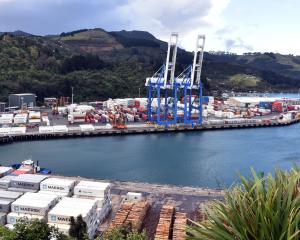There have been anecdotal concerns raised about environmental issues, surrounding silt-laden water and silt settlement but no indication Port Otago's largest capital expenditure proposal is building into a major environmental issue.
Port Otago, which has so far spent about $1.5 million, lodged a resource consent application with the Otago Regional Council in May for the channel-deepening project - which is expected to cost more than $100 million - to allow the passage of larger container ships.
The application listed about 30 affected parties: eight commercial, four environmental, seven recreational or sports groups and 11 local groups.
It was understood few submissions had been lodged so far.
Dunedin spokesperson for the Surfbreak Protection Society, Nik Reeves, said Aramoana beach was one of the country's best breaks and called for submissions.
St Clair surfing club South Coast Boardriders Association was also calling for submissions.
Ms Reeves said in a statement yesterday while previous sand dumping had improved wave quality at Aramoana in the past, she wanted dumping more closely monitored and the spoil to be dumped further out to sea.
Because of the size of the 200-page Port Otago document and data provided, when the regional council publicly notified the application the public submission period was doubled from the usual 20 working days to 40 days.
This time period expires at 5pm on Friday.
While Port Otago's application concludes there will only be minor effects associated with the removal and dumping at sea of about 7.2 million cu m of sand and silt, groups with interests in aquatic and avian wildlife, beaches and the foreshore are expected to make file submissions this week.
Port Otago claims most of the 7.2 million cu m of sand and silts (of varying weights) would go to the offshore dump site, 6.5km from Taiaroa Head, with the plume of the released sediment expected to settle 18km towards the north and be 5km in width.
The effect on recreational fishing and diving is likely to be localised and short term, while for surfing and swimming, there will be a negligible reduction in wave height, with no increase in erosion or build up, the application says.
Subject to consent, Port Otago has said shipping line demand for a deeper channel could be from two to 15 years away and the port would "immediately" extend its current maintenance dredging programme, at a "low intensity" level using its dredge New Era to remove about 1.45 million cu m annually.
Once larger ship visits were confirmed, it would use an international dredging contractor to complete the project, estimated to be about 110 days of dredging.





